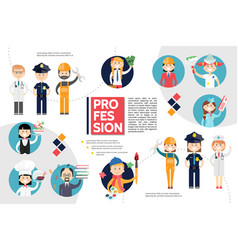Check Out The Influence Of Seasonal Aspects On The Efficiency Of Industrial Exterior Paint And Recognize The Ideal Times To Accomplish Enduring Outcomes For Your Project
Check Out The Influence Of Seasonal Aspects On The Efficiency Of Industrial Exterior Paint And Recognize The Ideal Times To Accomplish Enduring Outcomes For Your Project
Blog Article
Material Produce By-Doherty Chaney
When you're preparing a commercial outside painting project, seasonal elements can make or break your results. You'll wish to consider how temperature and humidity impact paint application and drying times. Selecting the best period can ensure your paint sticks appropriately and lasts longer. Yet which periods are truly the very best for this sort of job? Allow's discover the crucial elements that can affect your project's success.
The Effect of Temperature Level on Paint Application
When you're intending an industrial external paint task, the temperature level can dramatically influence how well the paint adheres and dries out.
Ideally, you wish to repaint when temperature levels range in between 50 ° F and 85 ° F. If it's as well chilly, the paint might not cure appropriately, resulting in issues like peeling off or splitting.
On the other hand, if it's also warm, the paint can dry out also quickly, protecting against proper adhesion and leading to an uneven coating.
You should additionally think about the time of day; early morning or late afternoon provides cooler temperature levels, which can be much more desirable.
Always examine the manufacturer's recommendations for the details paint you're utilizing, as they typically supply support on the suitable temperature level variety for optimal results.
Moisture and Its Impact on Drying Times
Temperature isn't the only ecological variable that influences your industrial outside painting task; humidity plays a substantial role too. High humidity degrees can reduce drying out times significantly, influencing the general top quality of your paint work.
When the air is saturated with dampness, the paint takes longer to heal, which can bring about concerns like inadequate bond and a higher danger of mold development. If https://zanetagns.azzablog.com/35241689/the-painting-sector-s-future-discovering-patterns-and-ingenious-developments on a particularly moist day, be gotten ready for prolonged wait times in between layers.
It's vital to keep track of neighborhood weather conditions and strategy as necessary. Preferably, go for humidity degrees between 40% and 70% for optimum drying out.
Keeping stucco painter in mind guarantees your job stays on track and delivers a long-term coating.
Best Seasons for Commercial Outside Painting Projects
What's the very best time of year for your industrial exterior painting projects?
Springtime and very early loss are generally your best options. During these periods, temperatures are moderate, and moisture degrees are typically lower, developing suitable conditions for paint application and drying.
Prevent summer season's intense heat, which can trigger paint to completely dry also rapidly, resulting in poor attachment and coating. In a similar way, wintertime's cool temperatures can impede appropriate drying and curing, taking the chance of the durability of your paint job.
Aim for days with temperature levels between 50 ° F and 85 ° F for ideal outcomes. Remember to examine the local weather report for rain, as damp problems can destroy your task.
Preparation around these aspects guarantees your paint project runs efficiently and lasts longer.
Verdict
To conclude, preparing your industrial exterior painting jobs around seasonal considerations can make a considerable distinction in the result. By organizing work during the optimal temperature levels and moisture degrees, you'll make sure much better adhesion and drying out times. Keep in mind to keep an eye on local weather forecasts and pick the right time of year-- spring and early loss are your best bets. Taking these actions will assist you achieve a sturdy and expert coating that lasts.
